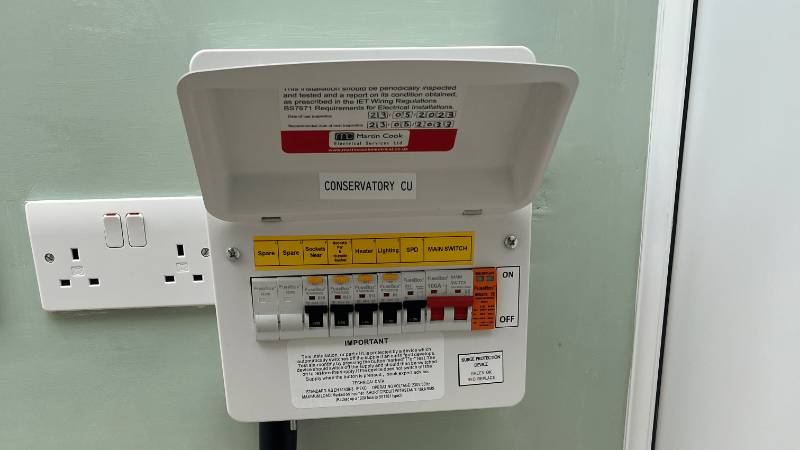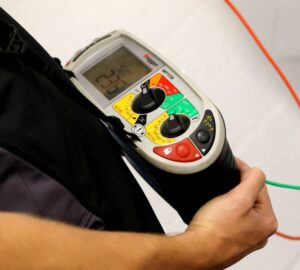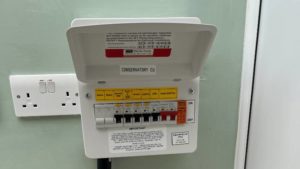If you’re renting out a property in the UK in 2025, there’s one thing you absolutely can’t ignore – your legal duty to provide a valid Electrical Installation Condition Report (EICR).
This is your Landlord Electrical Safety Certificate — and without it, you could face fines, delays with new tenants, or even refusal from letting agents.
Here’s everything landlords need to know for 2025 — whether you own one buy-to-let or manage a full portfolio.
Is an EICR a Legal Requirement for Landlords?
Yes — under The Electrical Safety Standards in the Private Rented Sector (England) Regulations 2020, all landlords are legally required to provide a valid EICR.
This applies to all rental properties in England, including houses, flats, HMOs, and new tenancies. No EICR? You could be fined up to £30,000 by your local council.
What Is an EICR?
An Electrical Installation Condition Report is an official document issued by a qualified electrician after inspecting and testing the fixed wiring in your property.
It checks for:
- Electrical faults and wear over time
- Outdated consumer units (fuse boxes)
- Earthing and bonding issues
- Fire and electric shock risks
If the report is marked as “Unsatisfactory”, the issues must be fixed within 28 days — and proof must be sent to your tenant and local authority.
How Often Do Landlords Need an EICR?
Landlords must get a new EICR:
- Every 5 years
- Before a new tenancy begins (if there’s no valid certificate already in place)
- After major electrical works
Pro tip: Don’t wait until the day a tenant moves in. Many agents now demand the certificate before they’ll list the property.
What Happens During an EICR Inspection?
A qualified electrician will inspect and test your fixed electrical systems, including:
- Consumer unit (fuse board)
- Socket outlets, switches and lighting circuits
- Earthing and bonding systems
- Visual checks of wiring condition and installation
You’ll receive a full report with any issues coded as:
- C1: Immediate danger — needs urgent attention
- C2: Potentially dangerous — must be addressed
- FI: Further investigation needed
Do I Need to Give Tenants a Copy?
Yes — it’s the law. Landlords must:
- Give a copy of the EICR to existing tenants within 28 days
- Give it to new tenants before they move in
- Send it to your local council within 7 days if requested
How Much Does It Cost?
Costs vary depending on the property size, but don’t go for the cheapest option. You need a qualified, insured contractor who understands the regulations and produces clear, compliant reports.
We offer fixed-price landlord EICRs with no hidden fees and fast turnaround.

Get in touch with the Martin Cook Electrical Services team today and request your free, no-obligation quotation. Have any questions? We’re here to help with any of your queries.
Book Your Landlord Electrical Certificate Today
We carry out landlord EICRs and safety certificates across England. Whether you’re managing a flat in Manchester, a terrace in Birmingham, or a portfolio in London — we’ve got you covered.
✔ NICEIC-Approved ✔ Fully insured & certified ✔ DBS-checked engineers ✔ Appointments available 7 days a week
FAQs – Landlord EICRs
Do landlords need an EICR by law?
Yes — it’s a legal requirement under UK law. All rental properties must have a valid electrical safety certificate (EICR) every 5 years.
How long does an EICR take?
Typically 1–2 hours depending on the size and condition of the property.
Can I be fined for not having an EICR?
Yes — local authorities can issue fines of up to £30,000 per breach of the electrical safety regulations.
Can a letting agent refuse to list my property without an EICR?
Yes — most reputable letting agents now require proof of an EICR before marketing your property.
Do I need to get a new EICR when a tenant moves out?
If your current EICR is still valid (within 5 years), you don’t need a new one unless you’ve made significant electrical changes.





